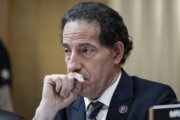Day trading has become extremely popular in the past few months.
The surge of short-term retail trading has led to a pickup in stock market price swings.
Market experts have several ideas why day trading has become more popular this year. Some relate it to people having more time on their hands and being stuck at home because of lockdown orders amid the pandemic. Others mention that since regular Las Vegas-type betting has been unavailable, gamblers have taken to stocks. New mobile trading platforms may also make it easier to day trade.
While there’s no way to know exactly why people are day trading, Bob Tull, president of Procure Holdings, who has taught people how to trade, says some of the uptick in activity could be people trying to take concentrated bets to recoup some of the money they lost during the first-quarter market crash.
[See: Most Popular Robinhood Stocks.]
Investors can certainly profit through short-term speculative trading, which is the definition of day trading, but they can also get in over their head. News reports say commission-free trading trading platform Robinhood made changes after the family of a 20-year-old user said he committed suicide after he thought he had lost nearly $750,000 trading options.
If you are going to dabble in day trading, experts say new traders need to be safe and keep a few factors in mind:
— Volatility has surged.
— Commission-free trading still has costs.
— Reducing the risk of day trading.
Volatility Has Surged
John Person, founder of Persons Planet, a trading education and advisory service company, says heightened volatility is potentially dangerous for new day traders.
Person says the average true range — a common volatility measure — has held around 29 between 2015 to earlier this year. Lately, however, it has been around 90. It even reached as high as 248 in March.
“Statistically speaking, people don’t understand the fast pace of the volatility,” he says. “They’re looking for fast money, which attracts people. There’s low margins and people want to get rich quick. Volatility is a two-edge sword, and it can definitely work against you.”
He says “there’s a lot of bad stories out there” of people getting hurt financially, such as when crude oil prices went briefly negative.
Day trading has been around since the internet, making one of its first appearances during dot-com boom in 2000. These days, changes in volatility and momentum are accelerated.
Todd Rosenbluth, director of ETF research at CFRA, says a lot of day trading is trying to get in front of news developments, such as an earnings report. Stocks can rise after a good earnings report, but they may drop if results are short of expectations.
“If you’re a new investor or not fully informed about the company and what sentiment is, you could be standing in front of a steamroller because the stock sold off sharply,” he says.
Just following stock momentum can be problematic. Stocks fall in an out of favor very easily, Rosenbluth says, so it’s hard to maintain the momentum of picking winners.
Commission-Free Trading Still Has Costs
Rosenbluth says nearly all brokerage platforms let users trade stocks and exchange-traded funds without paying a commission, which may contribute to more day trading. “The elimination of commissions has given the appearance that there isn’t a cost to having a short-term trading approach,” he says.
The more changes you make to a portfolio in a short period of time, there’s a greater chance of reward — or risk. “People only think about the reward and not the risk,” he adds.
[Sign up for stock news with our Invested newsletter.]
There isn’t much hard evidence to track the long-term return rates for individual traders because researchers don’t know what individuals hold. Yet looking at actively managed mutual funds, data shows most active fund managers have difficulty beating the S&P 500 index over the long term. Morningstar data shows that over a 15-year time frame, only 37% of active funds beat their indexes after fees are calculated. In 2019, only 29% beat their indexes.
Whether you’re a fund manager or a retail investor, the main challenge is the same: trying to pick winners, not losers. “The only thing you’re eliminating is the management fee because you’re doing it yourself,” Rosenbluth says.
Todd Soltow, co-founder of Frontier Wealth Management, says day traders generally don’t do much research or know enough about a company’s underlying fundamental information when they’re trading. “This is more akin to gambling than it is to investing,” he says.
Day traders can put themselves at risk if they avoid selling a stock whose value is decreasing. “You can generate some hefty losses,” he adds.
Soltow says he’s not against people who want to day trade, but it should be with a small amount money. “It needs to be that amount of money to where if the worst happens and you lose it, it’s not going to affect your ongoing financial future.”
Reducing Risk of Day Trading
Tull says if you are going to day trade, know the different order types. That information is available on any brokerage platform. “Do not put in a market order on anything. Ever. That’s a kiss of death,” he says. “Use limit orders or market-on-close orders.”
A market order is an immediate order to buy or sell, while a limit order is the maximum or minimum price at which you are willing to buy or sell. A market-on-close order is an order to buy or sell as close to the closing price as possible.
[See: 7 Strategies to Reduce Portfolio Risk.]
Don’t trade when the Volatility Index, or VIX — a measure of volatility — is rising. “When you see the VIX going up more than a point or two, stay on the sidelines,” he says. “That’s when the professional traders are in. As a retail person you don’t belong there.”
Person says new day traders have to practice good risk management by trading small sizes, so that if prices turn against them, their finances aren’t seriously hurt. “You don’t have to go into a position all at once. Position size is something you can control. You can’t control the news, but you can control when you’re in or out and your position.”
More from U.S. News
2020’s Dividend Aristocrats List: All 66 Stocks
The Complete Berkshire Hathaway Portfolio
Artificial Intelligence Stocks: The 10 Best AI Companies
The Dangers of Modern Day Trading originally appeared on usnews.com







